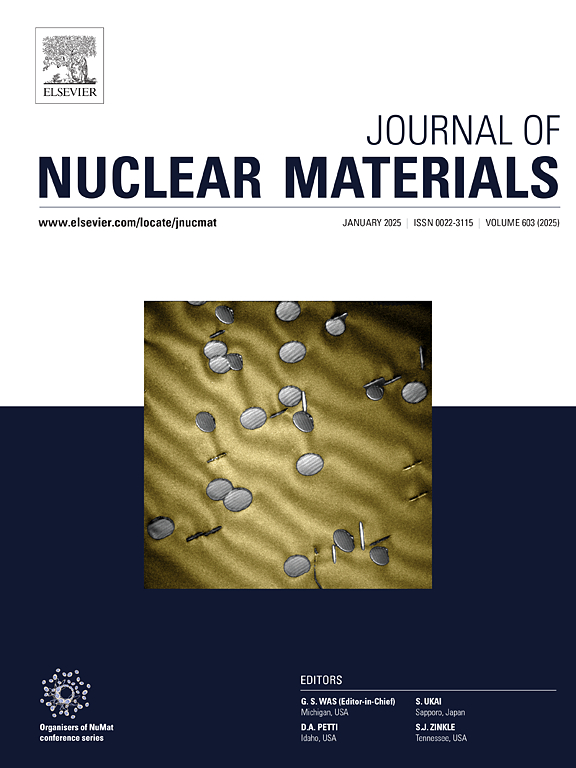Mechanistic nuclear fuel performance modeling of uranium nitride
IF 2.8
2区 工程技术
Q3 MATERIALS SCIENCE, MULTIDISCIPLINARY
引用次数: 0
Abstract
Uranium mononitride (UN) is a nuclear fuel candidate for advanced reactor designs and an alternative being considered for light water reactors due to its higher thermal conductivity and uranium density than UO2. As with any nuclear fuel, swelling and fission gas release are important factors for safety, while also being some of the hardest phenomena to predict with a high degree of confidence. Getting a grasp on the gas swelling behavior and release is crucial to lower the barrier for UN utilization. An accelerated swelling rate at high temperatures observed experimentally, sometimes referred to as “breakaway swelling,” further complicates the prediction of fuel performance of UN. A mechanistic model has been developed using a multiscale approach to describe the intragranular and intergranular fission gas behavior. Lower-length-scale calculations have been employed to inform models of the gas and self-diffusion behavior, resolution rate, and bubble shape. Leveraging previous work on high burnup UO2, two populations of intragranular bubbles are considered; small bulk bubbles and larger bubbles located along dislocations. The dislocation bubbles were found to be crucial to the overall swelling behavior, and the breakaway swelling transition was associated with the transition in the gas atom diffusion mechanism from an irradiation-induced athermal diffusion regime at lower temperatures to an intrinsic thermal equilibrium regime at higher temperatures, accelerating the growth of the dislocation bubbles. Similarly, the threshold for fission gas release was associated with the grain boundary vacancy diffusivity surpassing the gas atom diffusivity at sufficiently high temperatures, allowing the over-pressurized grain boundary bubble to grow in size and interconnect. Using thermo-mechanical models with the fission gas model, two integral fuel pin assessment cases were simulated. This work demonstrates the ability of a multiscale approach to accelerate the understanding of advanced fuel forms when experimental data is limited.
求助全文
约1分钟内获得全文
求助全文
来源期刊

Journal of Nuclear Materials
工程技术-材料科学:综合
CiteScore
5.70
自引率
25.80%
发文量
601
审稿时长
63 days
期刊介绍:
The Journal of Nuclear Materials publishes high quality papers in materials research for nuclear applications, primarily fission reactors, fusion reactors, and similar environments including radiation areas of charged particle accelerators. Both original research and critical review papers covering experimental, theoretical, and computational aspects of either fundamental or applied nature are welcome.
The breadth of the field is such that a wide range of processes and properties in the field of materials science and engineering is of interest to the readership, spanning atom-scale processes, microstructures, thermodynamics, mechanical properties, physical properties, and corrosion, for example.
Topics covered by JNM
Fission reactor materials, including fuels, cladding, core structures, pressure vessels, coolant interactions with materials, moderator and control components, fission product behavior.
Materials aspects of the entire fuel cycle.
Materials aspects of the actinides and their compounds.
Performance of nuclear waste materials; materials aspects of the immobilization of wastes.
Fusion reactor materials, including first walls, blankets, insulators and magnets.
Neutron and charged particle radiation effects in materials, including defects, transmutations, microstructures, phase changes and macroscopic properties.
Interaction of plasmas, ion beams, electron beams and electromagnetic radiation with materials relevant to nuclear systems.
 求助内容:
求助内容: 应助结果提醒方式:
应助结果提醒方式:


